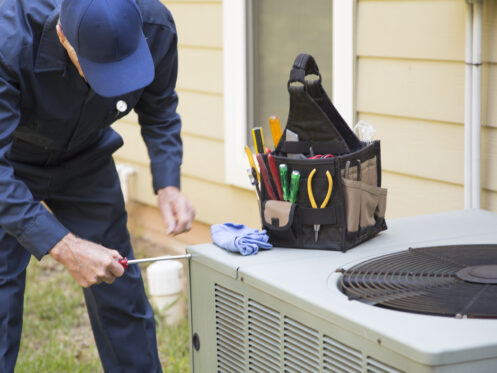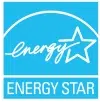It’s estimated that residential air conditioners lose about half of their efficiency after just 10 years of service. Thus, if the air conditioner in your Wilmington, NC home is at least a decade old, it could be using twice as much energy to produce the same results as it did when it was new. Shopping for a more efficient AC before the cooling season arrives is a great way to cut your summertime energy bills and improve your indoor comfort. Read on to learn more about the savings that a new and more efficient air conditioner can provide.
SEER Ratings, AC Efficiency, and Energy Costs
Seasonal energy efficiency ratio (SEER) ratings denote the efficiency of air conditioners. In southern states like North Carolina, the minimum SEER rating for residential air conditioners is 14. However, as of January 1, 2023, all new ACs are additionally marked with SEER2 ratings. While both rating systems compare the cooling output of air conditioners over a total cooling season to the amount of energy that they consume over this same time, SEER2 ratings account for the impact of static pressure in HVAC ducting and leverage testing that incorporates the use of M1 blower fans. Thus, you’ll find air conditioners with minimum SEER ratings of 14 and minimum SEER2 ratings of 14.5 or 15, depending upon their capacity. Opting for an AC with a SEER2 rating of 16 or higher will qualify you for impressive state and federal incentives. It will also provide the most noticeable changes in your home energy bills.
What It Means to Reach Your Break-even Point With a New AC
The break-even point with a new air conditioner is the point at which your energy savings match the cost of installing a new cooling system. It can take many years for even the most high-functioning air conditioner to reach its break-even point. However, homeowners typically notice a significant decrease in their overhead costs right away. For instance, according to the United States Department of Energy (DOE), upgrading from an AC with a SEER rating of 14 to one with a SEER rating of just 14.3 could lower a household’s seasonal cooling costs by as much as $400. By targeting an air conditioner with a SEER2 rating of 16 or higher, you may save up to 12% more on your energy bill throughout the cooling season.
Given that the costs of AC installation vary from home to home, some people will reach their break-even points 10 years after installation while others might not do so until their air conditioners reach the ends of their life spans. This, however, is only the case when considering energy savings alone. A new and more efficient air conditioner will provide benefits and savings in other areas that are well worth accounting for.
Take Advantage of Federal Tax Rebates and Other Incentives
You can reach your break-even point much sooner by taking advantage of federal tax credits and other state-managed incentives. Under the 2022 Inflation Reduction Act, homeowners can claim generous, end-of-year tax credits when installing qualifying HVAC equipment. In North Carolina, you claim a maximum tax credit of $600 or up to 30% of your project costs by opting for a new AC with a SEER2 rating of 16 or higher.
The North Carolina Department of Environmental Quality also offers impressive rebates for installing energy-efficient appliances under the Home Electrification and Appliance Rebates (HEAR) program and the Home Efficiency Rebates (HER) program. By installing qualifying equipment and applying for these rewards, you can offset your AC installation costs even more.
Add a Smart Thermostat to Your HVAC Install for Additional Savings
According to ENERGY STAR, homeowners can reduce their heating and cooling costs by as much as 8% annually by installing smart thermostats. Opting for one of these Wi-Fi-enabled devices when choosing your new AC will give you the benefit of the following:
- Remote temperature monitoring and temperature management
- Real-time performance alerts
- Energy consumption tracking and reporting
- HVAC air filter change reminders
As per the DOE, you can further reduce your home cooling costs by an additional 10% by simply raising your thermostat setting by one to two degrees at night and before leaving for work. Smart thermostats can make these adjustments automatically to eliminate human error.
Consider Zoning Your New Cooling System
Another efficiency upgrade to consider when installing a new air conditioner is HVAC zoning. When done correctly, the DOE estimates that zoning could cut home cooling costs by as much as 30%. Zoning divides buildings into two to four separate service areas or zones. Each zone is independently controlled by a local thermostat so that homeowners aren’t obligated to cool all areas at once. With zoning, if your top floor is empty but your bottom floor is full, your central AC can direct conditioned air into occupied areas only.
Other Ways in Which a New AC Can Help You Save
Irrespective of its SEER rating, a new air conditioner will invariably use less energy than one that’s nearing the end of its life span. Newly installed cooling equipment eliminates age-related losses in both performance and efficiency while promoting cleaner, fresher-smelling air. It also lightens your financial burden in a number of surprising ways.
Pay Less for Refrigerant Recharge Service
If your current air conditioner is 20 years old or older, there’s a good chance that it uses Freon or R-22 refrigerant. In 2010, the industry started phasing out Freon in favor of Puron. Puron officially became the standard for residential refrigerants in 2020 when all domestic production and importation ceased. Given that the remaining supplies of Freon are finite, the cost of Freon recharge service is substantially higher than it once was. Investing in a new AC now will help you sidestep fast-rising R-22 prices entirely.
Pay Less to Combat Unpleasant, IAQ-Related Symptoms
Old and inefficient air conditioners don’t make maintaining an acceptably high indoor air quality (IAQ) rating easy. If you haven’t replaced your AC in a while, you could be paying a small fortune for prescription or over-the-counter medications to alleviate common IAQ-related symptoms like:
- Itchy, watery eyes
- Coughing, sneezing, and wheezing
- Nasal and sinus irritation
- Frequent headaches
Installing a new AC can make it cheaper and easier to maintain balanced indoor humidity.
Longer AC Air Filter Life Spans
Surprisingly, even your HVAC air filters will last longer after you’ve installed new cooling equipment. New ACs aren’t harboring the dust, lint, and other contaminants often trapped in older, low-performing units.
AC Features That Will Maximize Your Savings
To optimize your energy savings when shopping for a new air conditioner, look for options with variable speed motors, built-in air purification for consistently optimum airflow, and high SEER and SEER2 ratings. While a SEER2 rating of 16 is high enough to qualify for the federal tax credit, you can find residential air conditioners with SEER2 ratings as high as 26.
Homeowners in Wilmington, NC can work with us to lower their home cooling costs and improve their comfort. We offer top-notch heating, indoor air quality, and cooling services. We’re also a trusted provider of ductless mini-split systems, smart thermostats, and HVAC ductwork. Get in touch with Green Dot Heating & Air now to schedule an appointment for cooling solutions.








